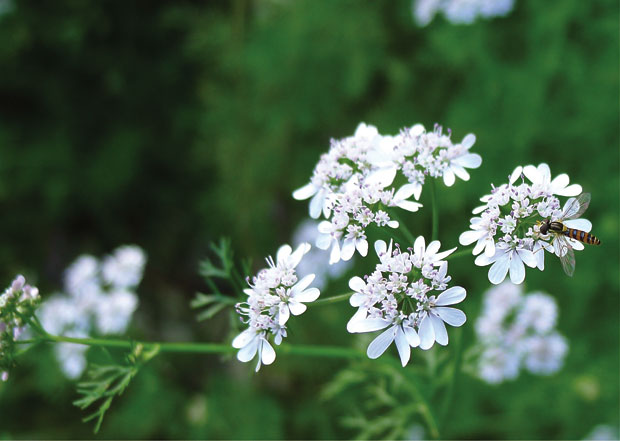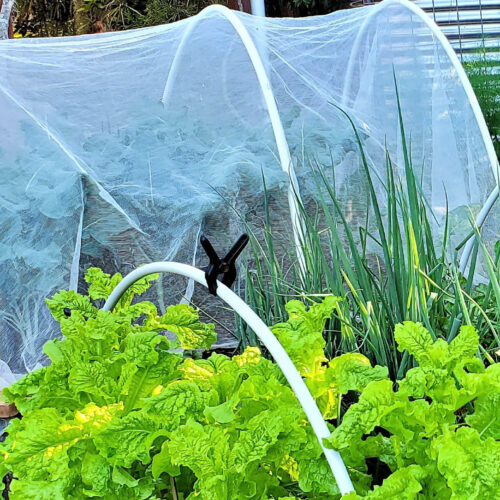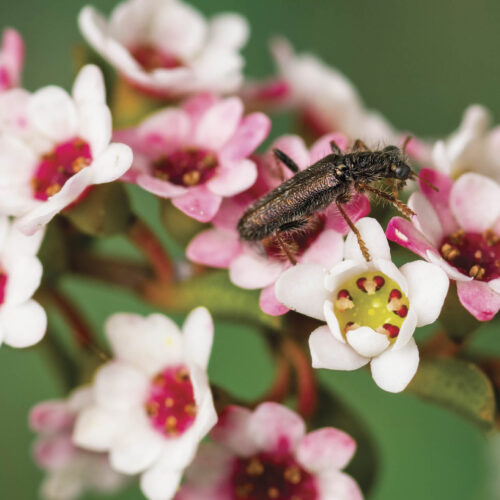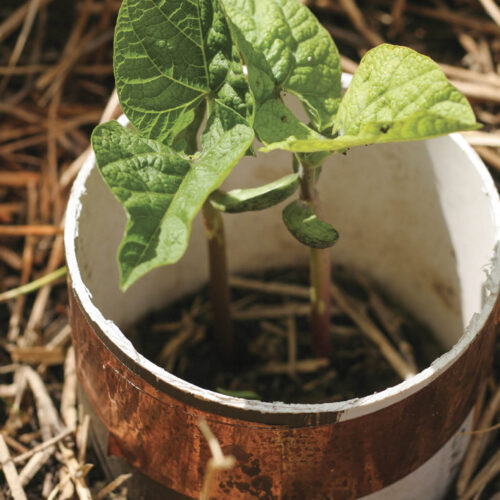Flower Power
2011-11-30T23:55:56+11:00
As the caterpillar breeding season begins in earnest, fight them with flowers, writes JERRY COLEBY-WILLIAMS.
A flowering, productive garden doesn’t just look better, it can also indirectly ruin an aspiring pest’s career while improving your harvest.
Organic food gardeners have long believed in ‘flower power’, now modern science is backing our traditional wisdom in growing ‘insectaries’ – plantings that attract beneficial creatures.
The University of Illinois even put a figure on it, suggesting that up to 10 times as many beneficial insects can be found in a flower-filled insectary¹. I can’t claim the same volume applies to my coriander, but 23 different insects are visiting their flowers as I write.
Individually, insectary plants are highly attractive to a wide range of beneficial animals – including ladybirds, beetles, hoverflies, assassin bugs, robber flies, parasitic and predatory wasps, bees, praying mantis, lizards, spiders and birds – that will eat caterpillars, control pests and pollinate. Forget growing double flowers, those vegetable eunuchs produce neither pollen nor nectar. The best are old favourites like dill, agastache, golden rod, heliotrope, lavender, marigold, mustard, snow-in-summer, spider flower, statice and zinnia.
You might wonder why I don’t just suggest a direct response, such as spraying caterpillars with organic sprays like pyrethrum, Bt and spinosad. Well, you could, but the idea of creating your own natural laboratory by sowing insectary plants – with lots of colour – is fun and rewarding. Colour is always a welcome motive for growing a flower-filled insectary. It not only attracts insects, it also feeds our own emotional wellbeing.
Insectary plants
Many excellent insectary plants are simple to cultivate. For a start, you could just let any clover in your garden flower. If you only have room to try one plant now, sow either coriander, dill, parsley or sacred basil, and sow fortnightly for a succession of flowers.
However, a diversity of species makes the most effective insectary. Either plant or sprinkle seed directly on freshly dug soil where they are to flower and water them in. Beneficial insects don’t care if their food plants are sown informally or planted in rows. I supervised my five-year-old sister sowing balsam, larkspur, alyssum, candytuft and marigolds in our cool temperate London garden when I was 11.
To explore other easy-to-grow insectary plants, read up on those belonging to plant families with proven appeal as being beneficial: the carrot family (Apiaceae), mint family (Lamiaceae) and daisy family (Asteraceae). By aiming to have something in flower all year-round, your garden will gradually mature into one that doesn’t just temporarily attract, but sustains resident populations of beneficial creatures.
¹University of Illinois (USA), ‘Benefits of Insectary Plants’.






